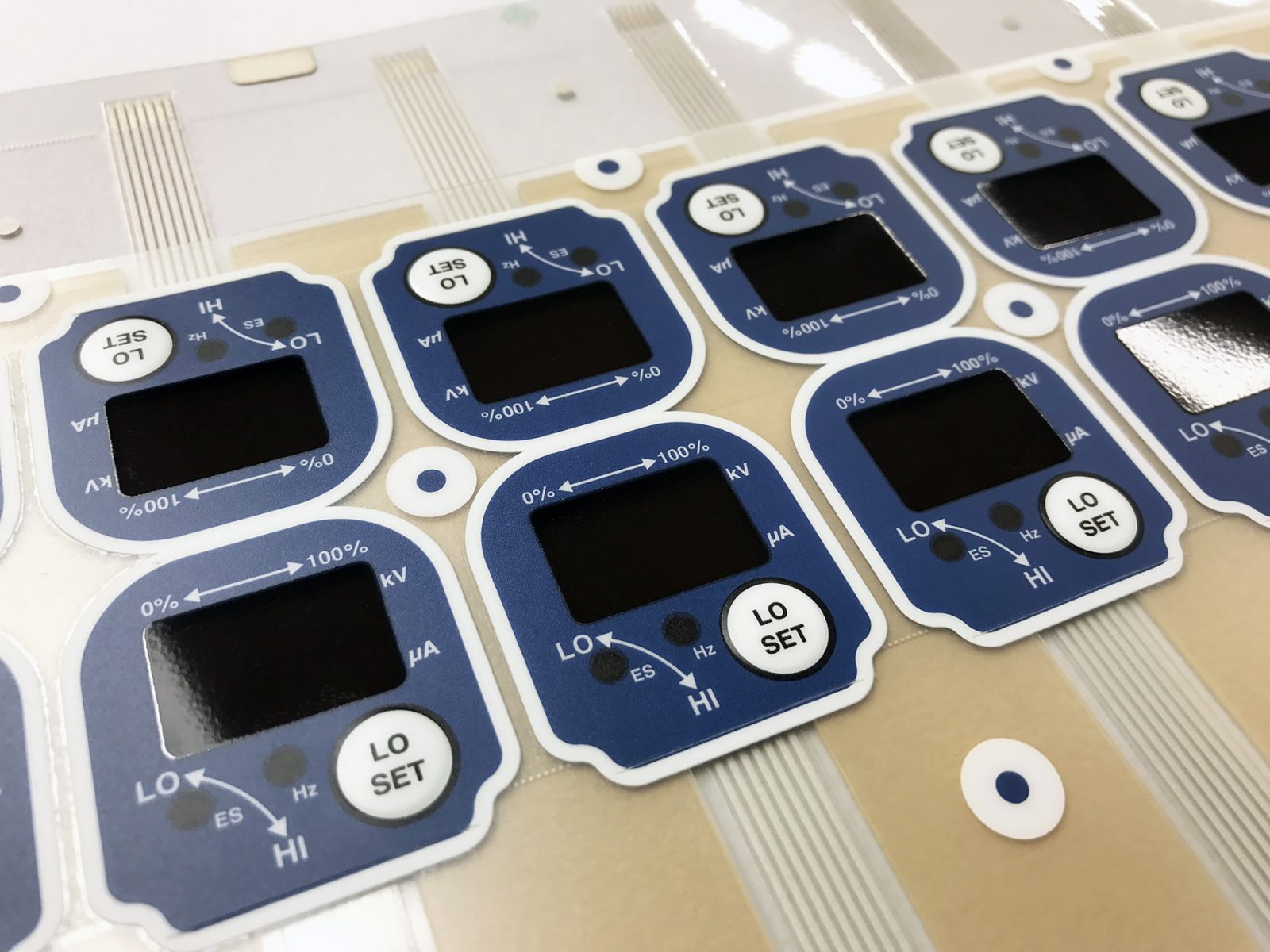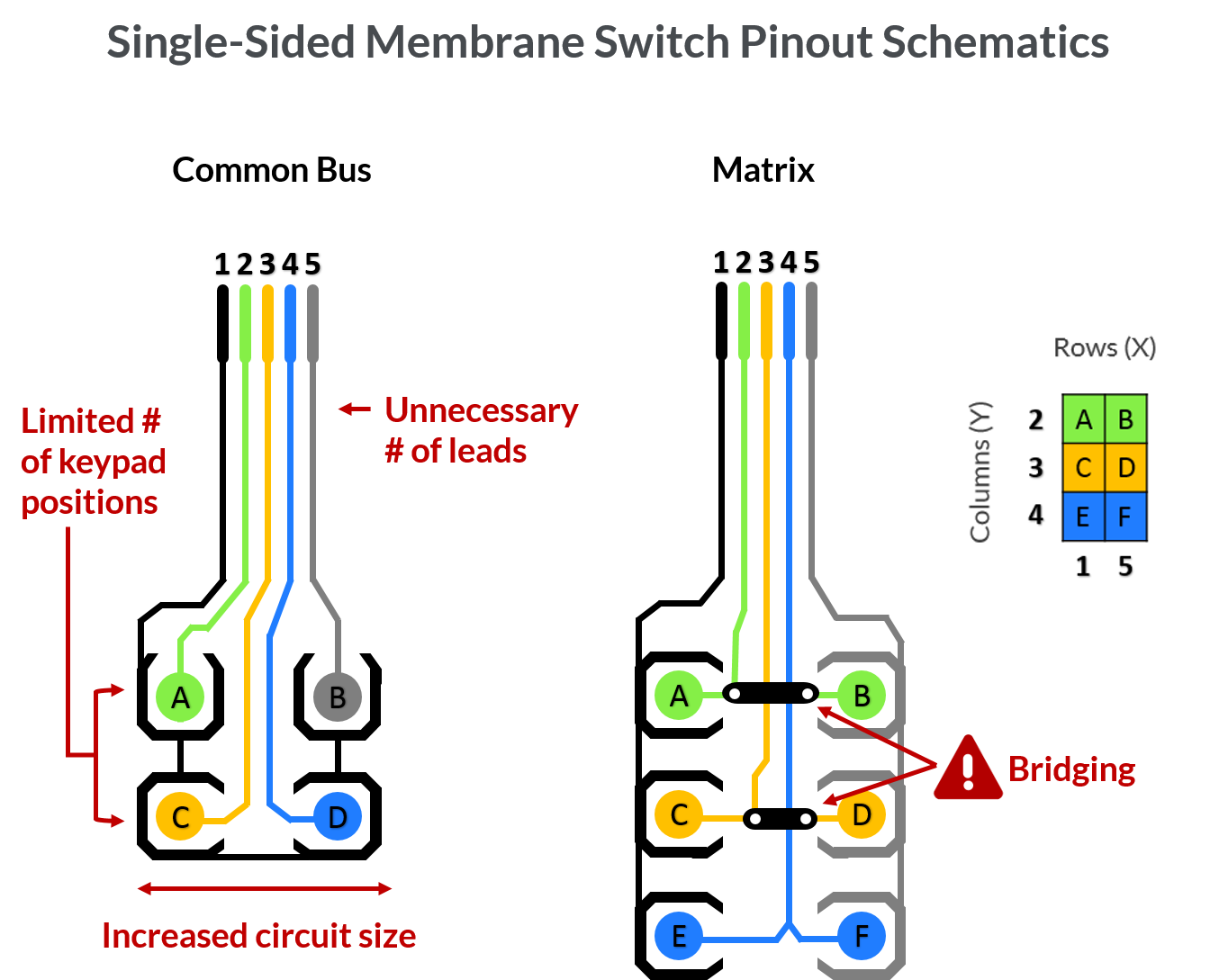Ensuring Quality and Longevity with Membrane Switches in Electronics
Ensuring Quality and Longevity with Membrane Switches in Electronics
Blog Article
Understanding the Relevance of Membrane Switches in Interface
Membrane switches are essential elements in the style of effective interface, promoting not only functionality but additionally improving visual allure and customer interaction. Their one-of-a-kind functions, such as resistance to customizable styles and ecological variables, make them ideal for a diverse array of applications across multiple markets. As we discover the future patterns and various benefits connected with Membrane technology, it ends up being clear that these buttons are much more than simply components; they represent a convergence of development and functionality. The ramifications of this innovation on individual experience deserve examining additionally.
What Are Membrane Switches?

The spacer layer, which includes sticky properties, permits the separation of the circuit layer from the overlay, ensuring that the button remains in a non-activated state till pushed. When pressure is put on the overlay, it presses the spacer layer, connecting the space and finishing the circuit in the underlying layer. This design not only lowers the physical room required for traditional mechanical buttons however likewise improves the durability of the tool, as Membrane switches are usually immune to dirt, dampness, and various other environmental factors.
Commonly found in applications ranging from customer electronics to medical tools, Membrane buttons are important to modern innovation, offering a user-friendly and efficient user interface that straightens with contemporary style requirements.
Benefits of Membrane Buttons
While numerous button innovations exist, Membrane Switches deal unique benefits that make them especially preferable in different applications. Among the primary advantages of Membrane switches is their portable style, which enables space-saving executions in tools where property is limited. Their slim account not only boosts aesthetic charm but additionally promotes light-weight building and construction.
Another substantial benefit is their resistance to environmental factors. Membrane switches are typically sealed against moisture, dust, and contaminants, making them ideal for usage sought after atmospheres, such as clinical tools and industrial tools. This toughness extends the life-span of the switch, decreasing maintenance expenses and boosting integrity.
Moreover, Membrane switches can be personalized to satisfy certain layout needs, incorporating unique graphics and shades that boost user communication. Their tactile responses alternatives can additionally be tailored to supply an enjoyable customer experience. Additionally, Membrane switches are affordable, especially in high-volume applications, as they can be generated successfully.
Applications in Different Industries

In the consumer electronics industry, Membrane buttons are prevalent in tools such as microwaves, washing equipments, and remote controls. Their responsive feedback and aesthetic options enhance individual experience while giving a streamlined, modern-day appearance. In addition, automotive producers use Membrane switches in control panel controls and infomercial systems, where space is limited, and customer involvement is vital.
Moreover, the industrial sector leverages Membrane switches in control panels for machinery and equipment, permitting intuitive operation in typically extreme atmospheres. Their resistance to chemicals and moisture ensures longevity and reliability in these applications. Overall, the flexibility of Membrane Switches contributes considerably to their widespread use, making them essential in various technical domain names.
Design Considerations for Membrane Switches

When making Membrane switches, numerous crucial considerations must be thought about to ensure ideal functionality and individual experience. The choice of products is important; picking resilient, high-quality substratums can enhance the button's longevity and resistance to ecological variables such as moisture and temperature variations.
Second of read this article all, the style of the visuals overlay need to prioritize quality and simplicity of use. Symbols and text need to be clear, and the format needs to promote instinctive communication (membrane switches). Additionally, tactile comments is essential; integrating a tactile dome or various other mechanisms can improve the customer experience by giving physical verification of activation
One more important variable is the button's electrical performance. Designers should guarantee that the conductive traces are correctly created to minimize resistance and prevent signal disturbance. This includes examining the needed actuation force and making sure compatibility with the digital components they will interface with.

Future Fads in Membrane Technology
As innovation continues to development, Membrane buttons are poised to develop significantly, driven by innovations in materials and producing methods. One arising fad is the incorporation of sophisticated materials, such as conductive inks and flexible substrates, which boost resilience and reduce the general weight of Membrane switches. These products not only improve the responsive response yet also allow for the design of buttons that can endure harsher ecological conditions.
In addition, the assimilation of touch-sensitive technologies is changing standard Membrane Switches into even more interactive interface. Capacitive touch sensors embedded within Membrane switch panels can give an extra intuitive and receptive individual experience, straightening with the expanding need for streamlined, check over here modern styles in customer electronics.
In addition, advancements in printing techniques, such as electronic and 3D printing, make it possible for rapid prototyping and personalization of Membrane buttons. This adaptability enables suppliers to respond a lot more quickly to market needs and consumer preferences.
Finally, sustainability is becoming a significant focus, with manufacturers exploring environment-friendly products and procedures. As these trends unfold, the future of Membrane technology promises improved capability, visual charm, and ecological duty, strengthening their role in advanced interface across various sectors.
Verdict
In final thought, Membrane Switches represent an essential element in the design of interface, combining capability with visual adaptability. Their advantages, consisting of durability and resistance to ecological variables, make them suitable for varied applications across numerous sectors. Thoughtful design considerations improve individual interaction and experience. As developments in technology continue, the development of Membrane switches is anticipated to further fine-tune user interfaces, driving development and important link enhancing functionality in a significantly intricate technical landscape.
Membrane buttons are important parts in the style of reliable customer interfaces, assisting in not only functionality yet also enhancing aesthetic charm and individual interaction.Membrane Switches offer as an essential element in different customer interfaces, facilitating a smooth communication between customers and digital devices.While countless switch innovations exist, Membrane Switches offer distinctive advantages that make them especially preferable in different applications.In addition, Membrane switches can be personalized to fulfill certain design requirements, including special graphics and shades that enhance individual communication.In verdict, Membrane Switches represent a vital component in the design of customer interfaces, integrating performance with visual flexibility.
Report this page